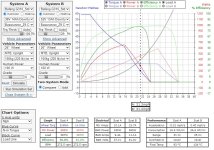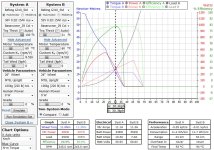gothicsurf
10 mW
I would like to know if there are any downsides to having a higher voltage battery pack for run a relatively small motor (Bafang MG310).
Would the higher voltage and thereby lower current help maintain cooler temperatures considering a CA would maintain the same wattage irregardless of voltage?
Embarking upon my first ebike build and things seem pretty straight-forward except for the battery.
A simple pedelec for minor assist while hauling a trailer+dog -- figure upon a rear, more discrete motor, easily locked through the rim. A downtube battery either mounted or carried in a bag bungeed to the rack. It's just the voltage of the battery I am stuck .. would there be any advantages to running 36v vs 52v?
In the case of possibly two motors down the road, would a larger motor be limited by 36v?
Would the higher voltage and thereby lower current help maintain cooler temperatures considering a CA would maintain the same wattage irregardless of voltage?
Embarking upon my first ebike build and things seem pretty straight-forward except for the battery.
A simple pedelec for minor assist while hauling a trailer+dog -- figure upon a rear, more discrete motor, easily locked through the rim. A downtube battery either mounted or carried in a bag bungeed to the rack. It's just the voltage of the battery I am stuck .. would there be any advantages to running 36v vs 52v?
In the case of possibly two motors down the road, would a larger motor be limited by 36v?



